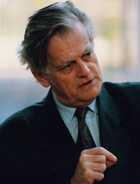- Big Bang or Full Stop? (2005) [Updated 7 years ago]
- Hafele and Keating Tests; Did They Prove Anything? (2000) [Updated 1 decade ago]
- A New Theory on the Behavior of Light (1997) [Updated 1 decade ago]
- Synchronisation of Clock-Stations and the Sagnac Effect (1997) [Updated 1 decade ago]
- Big Bang or Full Stop? (2005) [Updated 7 years ago]
?Hubble's Law' states that the further away a galaxy is, the faster it is receding from Earth. But, the red shift of light from galaxies in-dicates their recession speeds, at the time of emission of the light. The correct interpretation is, therefore, that the farther away a galaxy was at the time of emission of the light, the faster it was recessing. The nearest galaxies give us the most recent information; the more recent the information, the slower the recession. A logical conclusion is that the recession of galaxies has decreased gradually to a present steady state. This means that the ?Big Bang' theory is not sustainable and that the Universe is not expanding.
Reprinted in Proceedings of the NPA, V2, pp. 67-79 as "Full Stop or Big Bang?"
- Hafele and Keating Tests; Did They Prove Anything? (2000) [Updated 1 decade ago]
The original test results were not published by Hafele & Keating, in their famous 1972 paper; they published figures that were radically different from the actual test results which are here published for the first time. An analysis of the real data shows that no credence can be given to the conclusions of Hafele & Keating.
- A New Theory on the Behavior of Light (1997) [Updated 1 decade ago]
This paper is presented in the form of a videotape of a lecture to an audience of several hundred in Dublin, Ireland in Feb., 1996. The author presents the results of his searching out and analyzing many experimental results, reported over more than a century, relating to light motion and aether theory. He concludes that aether moves along with the earth in its orbit, but does not rotate daily with the earth.
- Synchronisation of Clock-Stations and the Sagnac Effect (1997) [Updated 1 decade ago]
It is shown that the Sagnac correction, as applied to time comparisons upon the Earth, does not derive from the normal Relativistic corrections. It is psoposed that the reason given for the application of the Sagnac correction, and the circumstances appropriate to the application, require amendment.



